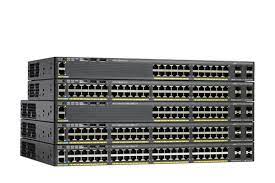Key points about cisco switches

The cisco switch is a highly versatile device that is used in both small and large businesses. The following are three key points about the switch that you may find helpful. 1. The switch can be used for networking and networking applications. 2. The switch can be used for voice, data, video, and security applications. 3. The switch can be used to connect servers, storage devices, and networks.
What is a cisco switch?
A Cisco switch is a network switch that is used to connect devices in a network. Switches can be connected together to form an entire network or they can be connected to individual devices. Switches are used to manage networks and traffic.
Types of cisco switches
There are a few different types of Cisco switches that can be used at a network. These switches come in both small and large form factors, with each having its own unique set of features and capabilities.
The most popular switch type is the traditional “rack-mount” switch. These switches are compact and can be placed on an upper or lower shelf in a rack, providing easy access for system administration. They typically have fewer features than other switches, but are perfect for small networks or networks that do not require many advanced switching features.
The next most popular switch type is the “desktop” switch. These switches are also compact and can be placed on a desktop, but they also have built-in ports that allow them to be attached to a network cable directly. This makes them great for use in larger networks where space is tight or in environments where there is limited access to console ports. Desktop switches also tend to offer more features than rack-mount switches, making them better suited for more advanced networking needs.
One of the most recent switch types is the “network router.” Network routers act as the central point of control for an entire network, handling traffic flow between devices on the network and managing configurations and settings for all devices on the network. This makes them essential components in larger networks where there are many devices connected together and it is difficult to manage all of their individual settings manually.
What are the key features of a Cisco switch?
A Cisco switch is a multipurpose networking device that can be used in a variety of settings, including onsite and remote networks. Some key features of a Cisco switch include:
– Switches are modular, allowing you to add or remove components as needed.
– They support Layer 2 and Layer 3 switching functions, making them versatile devices for both large and small businesses.
– Cisco switches have been designed with redundancy in mind, meaning that they can withstand several failures without interruption to network operations.
What are the different cisco switch models?
Cisco switches come in a variety of models, each with its own set of features. This guide covers the most common switch models, their features, and how to choose the best one for your needs.
Small business and branch office switches: The Cisco 2650, 2660 and 2670 are great choices for smaller businesses that don’t need all the bells and whistles of the larger switches. They offer a lower price point, minimal feature set and limited scalability.
Modular switching: If you need more capability than a small business switch can provide, consider a modular switch. These switches are built from interchangeable modules, so you can add or replace modules as your needs change. The most popular modular switch is the Cisco UCS Series.
Enterprise backbone switches: For large companies with complex network architectures, enterprise backbone switches are a must. These switches can handle multiple VLANs and broadcast domains, as well as dense switched networks with thousands of devices. The best-known enterprise backbone switch is the Cisco Nexus series.
If you’re not sure what type of switch to buy, we recommend consulting with an expert or using ourswitch selector tool 。
How to configure a cisco switch?
Configuring a cisco switch can be a daunting task, but with the right approach and tools, it can be simplified significantly. In this article, we will cover the following topics:
1) Configuring basic switch settings
2) Configuring VLANs and trunking
3) Configuring interface switching features
4) Configuring port-based security
5) Managing switch functions using Cisco IOS commands
How to troubleshoot a cisco switch?
When experiencing issues with your cisco switch, there are a few key steps you can take to troubleshoot the issue.
1. Check the switch log files: In order to view the switch logs, you will need to navigate to the “logs” folder on your cisco switch and review the log files. By reviewing these logs, you may be able to determine what caused the issue and how to fix it.
2. Verify network connectivity: Once you have determined that an issue is related to network connectivity, you may need to verify that all devices are properly connected and communicating with one another. This can be done by using a tool like ping or traceroute.
3. Perform a factory reset: If all other troubleshooting procedures fail, it may be necessary to perform a factory reset on your cisco switch in order to restore its default configuration.
Conclusion
According to a recent study, the ten best US cities to live in are: 1. Austin 2. Seattle 3. Portland, Oregon 4. San Francisco Bay Area 5. Boston metropolitan area 6. Los Angeles metropolitan area 7. New York City 8.. Chicago metropolitan area 9.. Philadelphia metropolitan area 10 Washington D.C




